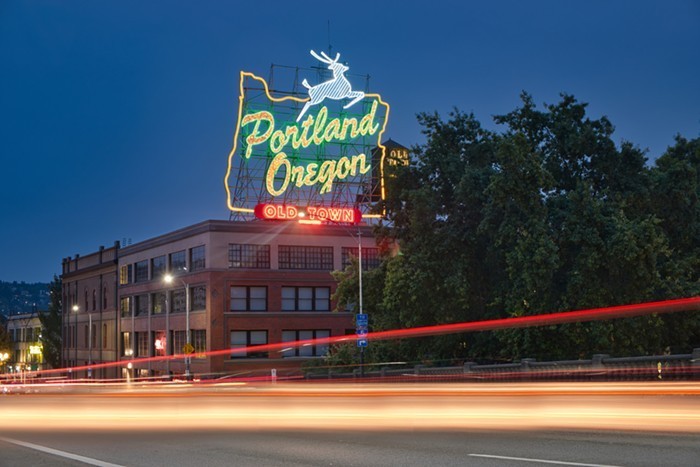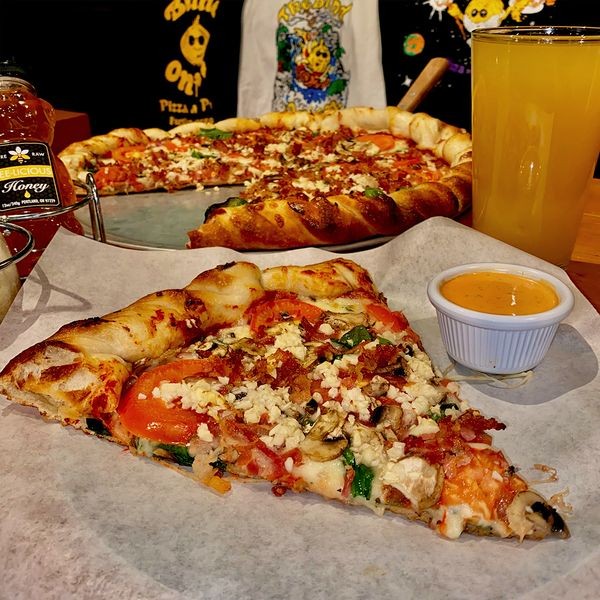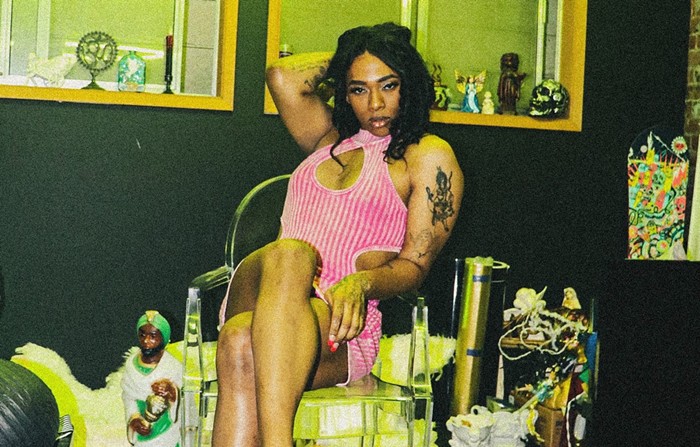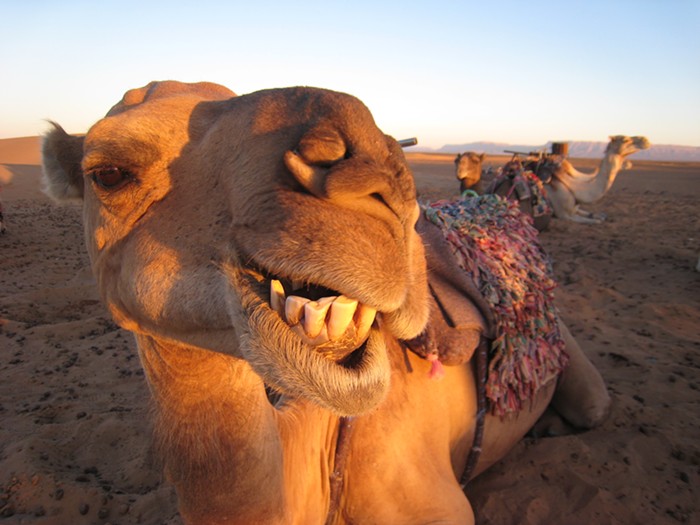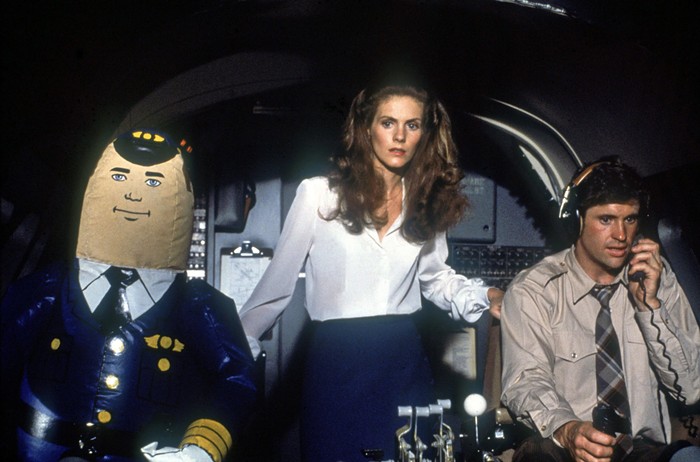THERE IS AN ILLICIT, visceral attraction to tattoos, and no one forgets their first. I was 15, terrified, and more than a little wet behind the ears when I first walked into Sailor Cam's Tattoo in downtown Seattle. Yet as much as I wanted to turn and run back out into the daylight, the pull of this primal, outlaw world had me. I dropped my 60 bucks on the counter and never looked back.
The style of Traditional American (as it has become known in recent decades and is sometimes referred to as Western Traditional) tattooing can be described as a distillation of iconic industrial-era imagery and the booming, seedy wartime port towns that drew sailors and loggers eager to brand their adventures permanently across their chests.
This style is marked by bold, thick outlines and heavy black shading, which allows for quick and efficient application—essential for tattooing in a storefront shop filled with drunken midshipmen on a weekend pass. The form's mechanics and technique also provide texture and depth to otherwise simple images, such as anchors, roses, and daggers. These elements of history and aesthetic boil down to a philosophic approach that helped define Western tattoo culture—within which Portland has particular significance.
Tuesday, February 8, marks the birthday of Bert Grimm (1900-1985), considered to be one of the leading forefathers of Traditional American tattooing. Born in Portland, Grimm immersed himself in the local tattoo scene before setting up shop in cities across the country, including St. Louis, Chicago, Las Vegas, Long Beach, and Honolulu. It was said that during this time Grimm spent a year traveling with Buffalo Bill's Wild West Show, and that he tattooed the likes of famed gangster Pretty Boy Floyd as well as Bonnie and Clyde (it's even rumored that his tattoos on the fugitive lovers were ripped apart when they were gunned down by a posse of Texas and Louisiana lawmen). He eventually returned to Portland to open Bert Grimm's Tattoo Shoppe on NW 6th, where he tattooed for several years before retiring to the Oregon Coast.
"Bert ran a good shop in a great location... back then Portland was a small town, so we got the working guys, rowdies, and a lot of railroad tramps," says Don Deaton, who began working alongside Grimm in 1978. Deaton and a partner eventually bought the business from Grimm's colleagues, Bob Shaw and Colonel Todd (both highly regarded Portland artists in their own right). In 1989, Deaton moved the shop to its current location on SE Grand and renamed it the Sea Tramp Tattoo Company, where he still tattoos today.
"Today's tattoo machines are tuned down a bit from the traditional machines. Back then you needed them fast to make a living... blood would shoot all over the room," says Deaton. "At full speed I was doing over 1,000 tattoos a year out of this shop. These days I do about 22 or 24 per year... I've slowed down a bit," he says with a laugh.
Portland's origins as an industrial port town are parallel to the history and evolution of Traditional tattooing. Before the railroads began running east from Seattle in the 1890s, Portland was the largest and busiest shipping port in the Northwest. With annual exports of canned salmon, wool, and wheat exceeding 200 million pounds, thousands of longshoremen and sailors worked in and inhabited Portland's waterfront area. The town quickly became immersed in vice of all forms, from brothels operating on houseboats in the waters of East Portland to the infamous Shanghai Tunnels around NW Couch, Davis, and Everett, where crimps like Bunko Kelly kidnapped men and sold them into forced labor on ships setting out from downtown piers.
By the early 1940s, downtown Portland and its waterfront saw another jump in its population of hardscrabble working men as local shipyards began churning out hundreds of vessels for the war effort. This era ushered in a gritty patriotism, as well as a new level of bawdy street life. Throughout this time, prominent tattooers from all over began setting up shop around Portland to cater to its hard-working and hard-living population. But as Portland quickly transitioned into a post-industrial economy, much of its tough frontier town personality was replaced by a progressive, educated identity—in 2000, the US Census tabulated that there were over 10,000 Portlanders who listed their profession as "artist"—causing a shift in culture and in the types of people looking to get tattooed. The bold iconography of Traditional began to give way to a more illustrative, fine-art style of tattooing.
While the form is much less prevalent, most tattooers will tell you Traditional American is not in need of reviving at all. In Portland there are a number of artists working in classic and neo-Traditional styles, and their tattoos are resonating with customers of all interests and backgrounds.
***
"Show me a man with a tattoo and I'll show you a man with an interesting past."—Jack London, 1883
The influences of Portland tattooers like Grimm, Deaton, Sailor George Fosdick, and Terry Tweed continue to permeate the art as a whole, and provide a sort of lineage to the younger generation of local practitioners. Two of the best Traditional artists in Portland today are Dan Gilsdorf and J.D. O'Kelly.
"Traditional artists have a lot of built-in respect for the artists that came before us... just looking through the old flash or the old Japanese body suits or the old wood block prints, it's impossible not to respect those artists and see how they were putting an aesthetic together," says O'Kelly, owner/proprietor of Electric City Tattoo in Northeast Portland.
He continues, "I think that folk-art traditions, traditional industrial-age culture, and for that matter, fine art, pop culture, and commercial art are all things that shape and define what a multi-headed beast tattooing is today. It's like rock 'n' roll, which can be as tame as Bob Seger, or as oppositional as G.G. Allin."
When asked about the cultural and artistic changes over the years, O'Kelly says, "In the early- and mid-20th century when traditional style was being codified by people like Lew Alberts, Tatts Thomas, Cap Coleman, Bill Jones, Bob Wicks, Sailor Jerry, and of course Grimm, I doubt that they self-consciously saw themselves as preserving a tradition. They were writing it firsthand."
Gilsdorf, of Atlas Tattoo in North Portland, grew up in the rural Western and Midwestern US, and began tattooing in Boulder, Colorado, in 1992. "I got my first professional tattoo in Denver at a crazy street shop that was open all night and full of drunks, bikers, gangbangers, and all sorts of shady characters. There were fights, craziness, foul language, bad, bad smells... many of the tattooers were wearing guns in holsters on their hips. I was hooked," he says.
"Many tattooers of my generation, myself included, didn't want to be limited by what was done in the past," Gilsdorf continues. "We thought that we were artists and that we could change tattooing from the low form it was to something more legitimate... As it turned out, we were misguided in our efforts. It was the tarnish that we loved about it in the first place. Nowadays I find that what I really love about tattooing is that I get to participate in this rich historic legacy of misfits, visionaries, and eccentrics that goes back hundreds of years and is still quite alive today. I want to do tattoos that have that timeless, powerful, mystical, mysterious essence that they had in the past. Those old tattoo designs are about something much larger than me, or my customer; they're about the fundamentals of the human condition."
***
"For a time I followed the sea; then later in life I learned the art whose age nobody knows."—Sailor George Fosdick, 1924
On a recent night in the back room of Sea Tramp Tattoo, Deaton, Gilsdorf, and O'Kelly sat down to discuss Traditional tattooing and how it has evolved alongside Portland. Deaton begins by telling a story of how a hurried man in a business suit walked into the shop to get change for the parking meter.
"Bert Grimm asks the guy if he'd ever thought of getting a tattoo. Before he could get out the door to feed the meter, Bert started in with his famous 10-minute speech: 'Many say I am the greatest tattoo artist in the world...' pretty soon the man was sitting down at my station and I was tattooing an eagle on his arm," says Deaton.
After looking through some of Deaton's old photos of his work and customers, including one of a very toothy and tanned Peter Fonda, the three begin talking about the evolution of tattooing.
"Traditional is just that because it doesn't really evolve, it's just all there was at the time," says Gilsdorf. "The customer would come in asking for something and you'd say, 'We can't do this or we can't do that, it's gotta have a hard black line and heavy shading,'" adds Deaton. Gilsdorf continues, saying, "And nowadays I don't feel like I need to make a mark... where everyone can see a tattoo and say, 'Oh, that's a Dan Gilsdorf piece.' To me it's more interesting to come hang out with guys like J.D. and Don, to be a part of this crazy history that we all love so much."
When asked about Portland's profile in the tattoo world, O'Kelly says, "Other cities are known for great artists, like San Francisco or LA or Amsterdam, but I think that Portland has some of the world's best. There are people here who are both very avant-garde and very throwback Traditional—almost in perfect tandem. It's that tension between progressiveness and tradition that allows old-school tattooing to continue to be relevant in Portland."
Whether viewed as an archival reference point in the origins of an electric era, or as a genre within a larger artistic field, Traditional tattoos—with their raw energy and simple structure—are woven into Americana culture like no other form of art. Toward the end of the evening in that back room of Sea Tramp, Don Deaton finishes the thought simply. Like rock 'n' roll, he says, "I think the Traditional style will always be around. It will always be here."

